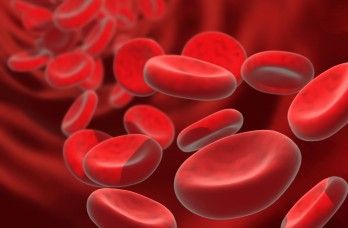Exa-Cel Improved HRQOL in Transfusion-Dependent β-Thalassemia
Exa-cel displayed MCID-exceeding, sustained mean changes from baseline across various HRQOL-related scores in transfusion-dependent β-thalassemia.
Exa-cel displayed MCID-exceeding, sustained mean changes from baseline across various HRQOL-related scores in transfusion-dependent β-thalassemia.

Exagamglogene autotemcel (exa-cel; Casgevy) broadly and durably improved health-related quality of life (HRQOL) in adult and adolescent patients with transfusion-dependent β-thalassemia (TDT), as shown in results from the phase 1/2/3 CLIMB THAL-111 (NCT03655678) and phase 3 CLIMB THAL-131 (NCT04208529) trials published in Blood Advances.
In adult patients (n = 35), the mean baseline European Quality of Life 5 Dimensions 5 Level (EQ-5D-5L) visual analogue scale (VAS) score and EQ-5D-5L health utility US and UK index scores were near general population norms and in line with previously reported baseline scores for adults with TDT. The minimal clinically important difference (MCID) was established to be 7 to 10 points.
Exa-cel infusions correlated with an improvement in EQ-5D-5L VAS score by month 9, with a mean change from baseline of 7.4 points (SD, 13.7), which was maintained through month 48, with a mean change from baseline at month 48 of 14.0 points (SD, 25.4). Improvements in the mean EQ-5D-5L health utility US and UK index scores were also observed by month 9 and maintained through month 48; at month 48, the mean change from baseline was greater than MCID.
Regarding the mean Functional Assessment of Cancer Therapy-General (FACT-G) total score, the MCID was 3 to 7 points. An improvement was observed by month 9, with a mean change from baseline of 3.3 points (SD, 14.5), and was sustained through month 48. Across all 4 FACT-G subscales—physical, social/family, emotional, and functional well-being—improvements exceeding MCIDs were observed at month 48. Additionally, fewer patients reported they lacked energy following exa-cel infusions.
Changes in the bone marrow transplant subscale score also reached the MCID, which was established as 2 to 3 points, by achieving a mean change from baseline of 2.1 points (SD, 5.2) at month 9 and maintaining improvements through month 48, with a mean change from baseline of 7.3 points (SD, 6.2).
In adolescents (n = 19), the mean EQ-5D-Youth VAS score had a mean change from baseline of 4.5 points (SD, 14.5) at month 6 and a mean change from baseline of 6.1 points (SD, 16.4) at month 24. Improvement was also observed in the mean Pediatric Quality of Life Inventory (PedsQL) total score, which showed a mean change from baseline of 10.7 points (SD, 13.6) at month 6 and a mean change from baseline of 12.2 points (SD, 11.8) at month 24.
Furthermore, the physical and psychosocial health subcomponent scores of the PedsQL showed 12.4-point (SD, 15.5) and 12.0-point (SD, 10.4) improvements from baseline at month 24. All 3 assessed domains of the psychosocial health score—social, emotional, and school functioning—were improved. Additionally, adolescents reported improvements in their energy levels, as fewer adolescents had low energy levels following exa-cel infusion.
“In conclusion, following exa-cel infusion, adults and adolescents with TDT had clinically meaningful and sustained improvements in HRQOL measures, with improvements seen across different instruments and domains, including physical, emotional, social/family, functioning well-being, fatigue experience, and overall health status,” wrote lead study author Josu de la Fuente, PhD, of Imperial College Healthcare National Health Service Trust at St Mary’s Hospital in London, UK, with study coauthors. “These results confirm the broad, durable clinical and patient-important benefits, including improved quality of life, that exa-cel can provide to patients with TDT.”
A total of 47 of the 54 patients with TDT completed the CLIMB THAL-111 trial and were enrolled in the CLIMB-131 long-term extension study. All patients who completed the 2-year study period in CLIMB THAL-111 were offered the opportunity to enroll in CLIMB-131, a 13-year extension study.
Eligible patients in CLIMB THAL-111 were aged 12 to 35 years with TDT and a history of equal to or more than 100 mL/kg per year or equal to or more than 10 units per year of packed red blood cell transfusions for the 2 years prior to screening.
Patients received a combination of granulocyte colony-stimulating factor and plerixafor for hematopoietic stem and progenitor cell (HSPC) mobilization followed by apheresis to collect CD34-positive HSPCs. All patients underwent myeloablative conditioning with pharmacokinetically adjusted busulfan prior to infusion. Intravenous exa-cel was administered between 48 hours and 7 days after conditioning.
The primary end point of CLIMB THAL-111 was transfusion independence. The key secondary end point was participants achieving a weighted average total hemoglobin of at least 9 g/dL without the need for red blood cell transfusion for a period of at least 6 months. Other end points included assessments of total and fetal hemoglobin concentrations, duration of transfusion independence, and changes from baseline in HRQOL based on adult and adolescent patient-reported outcome measures.
Reference
de la Fuente J, Frangoul H, Lang P, et al. Improvements in health-related quality of life in patients with transfusion-dependent β-thalassemia after exagamglogene autotemcel. Blood Adv. Published online August 19, 2025. doi:10.1182/bloodadvances.2025016702
Navigating AE Management for Cellular Therapy Across Hematologic Cancers
A panel of clinical pharmacists discussed strategies for mitigating toxicities across different multiple myeloma, lymphoma, and leukemia populations.